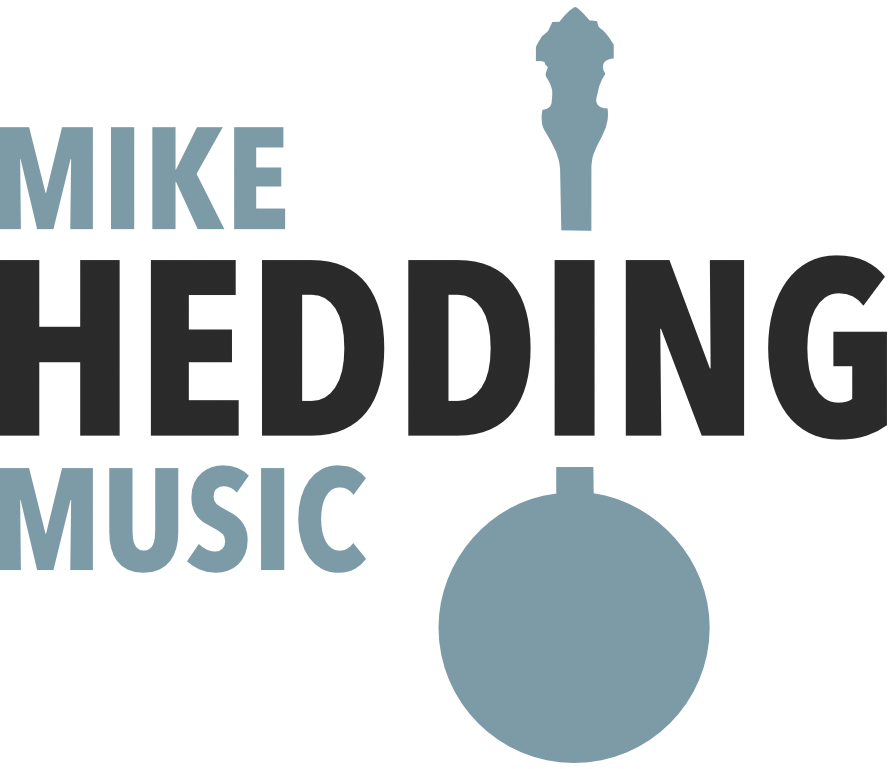Forum Replies Created
-
AuthorPosts
-
Mike
KeymasterI personally like working on multiple songs at once but everyone is different.
I always tell students just follow what seems fun to you.
If hyper focusing on one tune is keep you focused keep doing that.
If you’re getting bored playing the same tune over and over switch it up and work on something else.
I find I focus better when I work on multiple tunes at once.
– Mike
Mike
KeymasterSorry for the delay in response. Key of D but in standard G tuning.
Here’s the lesson:
– Mike
Mike
KeymasterSorry for the delay in response.
Looks like the main chords are Em, G, D, A.
I wouldn’t play this song with a capo personally. With a capo on 2nd fret the chords would be Dm, F, C, G.
The alternating thumb roll would work well as well as the forward-reverse roll.
You could do some basic 2-4 slides on the 3rd string over the Em and G chords to add some easy licks to break up the rolls.
If you’re still having trouble let me know.
– Mike
Mike
KeymasterSorry I had to remove the lead part because it’s a copyrighted song.
You’re not able to copyright chords (backup) so that’s why I was able to leave that section of the lesson up.
Thanks for your understanding.
– Mike
Mike
KeymasterYes, you’re hammering on the 4th string while playing the open 3rd string with your right hand.
It takes a little practice to get the coordination down but you’ll get it.
Check out this lesson it will give you some exercises to practice:
Understanding The Rhythm Of Slides, Hammer-Ons And Pull-Offs
-
This reply was modified 3 years, 10 months ago by
Mike.
Mike
KeymasterSorry, I missed it.
Yes, this would be more of an advanced beginner arrangement.
If you have any other questions let me know.
– Mike
Mike
KeymasterThe banjo track is included so you can hear how the arrangement sounds at different speeds. The middle section of the practice tracks doesn’t have the banjo lead.
But I can send you completely banjo-less tracks. Check your email. Thanks.
– Mike
Mike
KeymasterWhen you’re first starting out I’d just stick to playing the G pentatonic scale over all the chords.
As you get more comfortable. You can start switching between scales as the chord changes.
More importantly would be highlighting the chord tones of each chord regardless of what scale you’re playing. So for a G, C D progression you’d have (G,B,D) (C,E,G) and (D, F#, A).
Playing the chord tones as the chords change will help spell out the changes and add another depth to your soloing.
Mike
KeymasterAwesome. Glad it was helpful!
Yes it’s easy to get too focused on playing leads and not spending time on learning the basic melody and backup. I’ve struggled with this in the past.
Learning the basic melody and backup builds a solid foundation which you can then build on when you learn the lead.
Keep picking.
– Mike
Mike
KeymasterThanks for the question.
Unfortunately I had to remove the lead part of the lesson because it’s copyrighted. You can’t copyright backup/chords so I was able to leave that part of the lesson up.
Thanks for your understanding. Keep picking.
Best,
MikeMike
KeymasterGood question.
There’s not an easy way to just look at a tab you’ve never heard and know the melody for sure. It’s helpful to listen to the song to get a sense of the melody and then look at the tab.
A lot of times the melody will be the fretted notes and the open strings will be an extra part of the rolls but not always.
For this particular song the melody is mainly on the 1st and 2nd strings for measures 1-14 and then goes down to the 3rd and 4th strings for 15-21.
If you have any other questions let me know. Keep picking.
Best,
MikeMike
KeymasterYou’re adding one new finger at a time. You’ll want to practice keeping your other fingers down until you move to the next string.
This will help your fingers stretch out and will help you not build the habit of unnecessarily lifting your fingers up after playing each note.
If you have any other questions let me know.
– Mike
Mike
KeymasterSorry I don’t have a tab for the exact backup I played cause it wouldn’t ever be played the same way twice.
I go over a bunch of the techniques I used in the backup video though.
Did you check that out?
Which part is giving you trouble?
Mike
Mike
KeymasterMost people use two metal fingerpicks and a plastic thumbpick. That’s what I’d recommend to start.
I use dunlop .025 fingerpicks and I’d check out a golden gate plastic thumbpick.
That should get you started until you figure out exactly what your preference is.
Best,
MikeMike
KeymasterIf you’re trying to learn clawhammer banjo yes, you can play without picks.
If you’re trying to learn 3 finger bluegrass style banjo picks are absolutely necessary.
You simply won’t be able to get the speed, consistency and tone from your fingernails. They’re not at the right angle, made out of the correct material or the right length.
It may feel like you’re taking a shortcut skipping learning how to use the picks but you’re just building habits that you’ll have to unlearn later on.
The picks feel weird for everyone at first but it’s critical you learn how to use them if you want to play bluegrass style.
If you have any other questions let me know. Keep picking.
Best,
Mike-
This reply was modified 4 years, 1 month ago by
Mike.
-
This reply was modified 3 years, 10 months ago by
-
AuthorPosts
